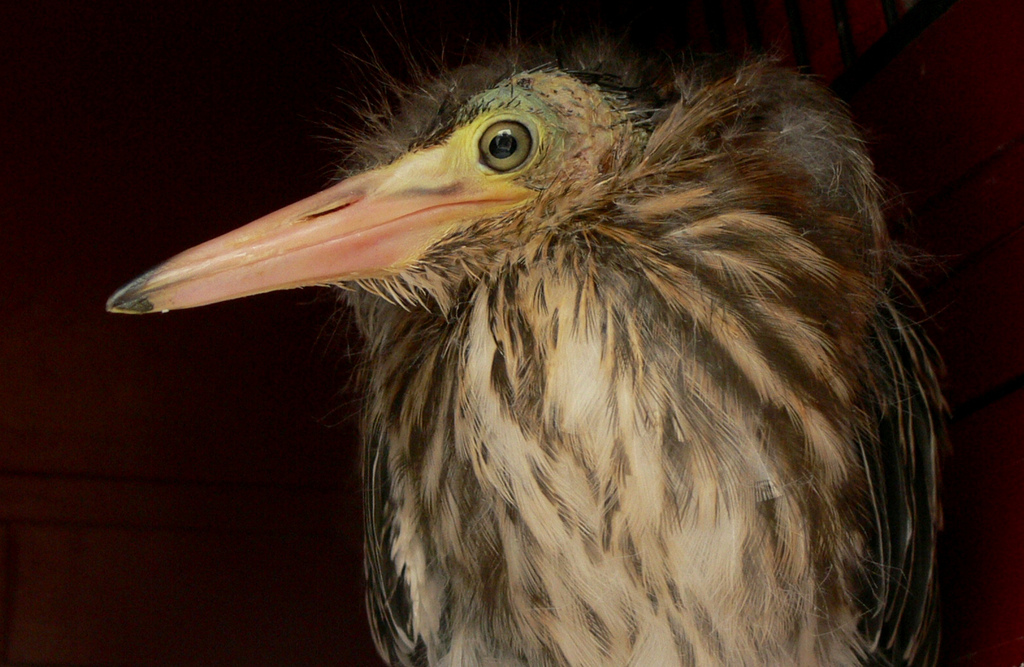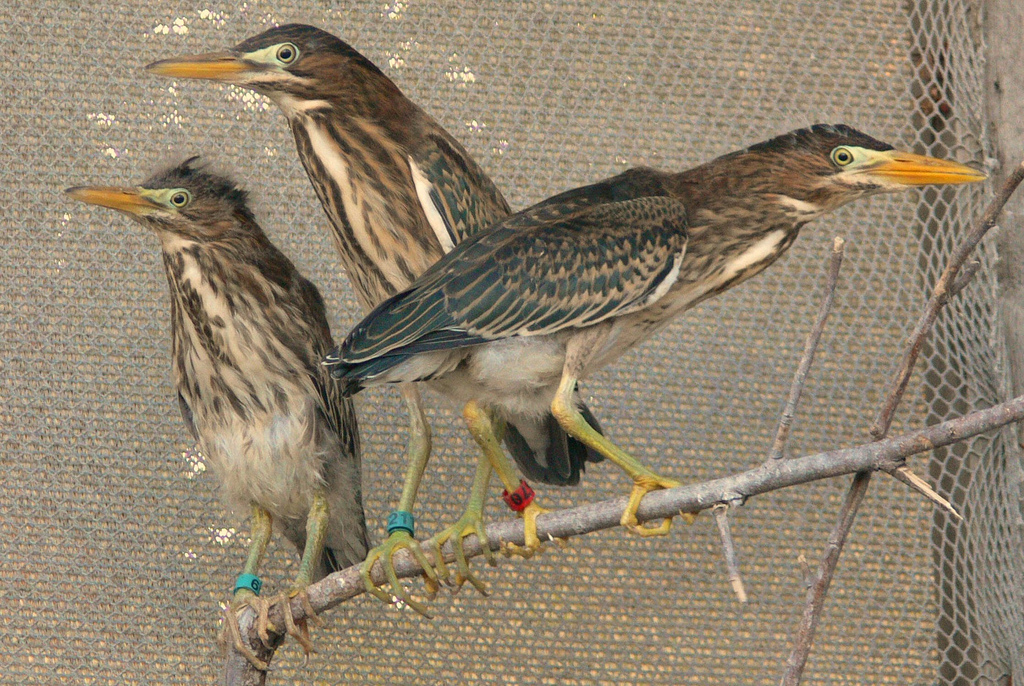Mating and Nesting
MATING: Green Herons mate in monogamous pairs each season. Exactly when breeding season begins depends on the region the herons are located; it can be as early as March or late as July. During this process pairs go through an elaborate series of courtship displays with unique calls. These displays include:
 Flying Around display: Resembles normal flight
around the breeding area while emitting a skow call.
Flying Around display: Resembles normal flight
around the breeding area while emitting a skow call.
Pursuit Flight, Circle Flight, and Forward displays:
Flight continues but uses a rasping ‘raah-raah’ call that exposes the
red lining of the mouth.
Crooked-Neck Flight displays: The male herons flex
their necks, dangle their legs, and beat wings in a way that produces a
noticeable sound.
Flap Flight display: A more intense continuation of the
Crooked-Neck Flight display. The male’s wing beats make a whom-whom-whom
sound and he stands his crest, neck and shoulder feathers erect while
still flying in crooked neck posture. Before landing he makes a 'roo-roo'
call.
Snap display: a non flying display in which the male
perches and points his body, neck, and head downward. With his bill at
or below the level of his feet and his feathers erect, the male heron
snaps his bill and produces a clicking sound.
at
or below the level of his feet and his feathers erect, the male heron
snaps his bill and produces a clicking sound.
Stretch display: Begins with the male stretching his
neck and pointing his bill straight up, followed by bending his neck
backwards almost to the point where his head is touching the erect
feathers of his shoulder plume. Then he will sway his neck back and
forth while making an 'aaroo-aaroo' sound and bulging his eyes.
After the males finish the Stretch display the females are allowed to
enter the nest area prepared by the male. She will also
perform a less intense Stretch display to confirm the pair-bond.
NESTING: Green
herons are not known for their nest building skills, and are in fact
some of the worst nest builders in the heron family. They nest anywhere
from 10 to 30 feet off the ground, yet their light greenish blue eggs
are often visible from ground-level due to the loose construction of
their nests.

The males select the nest site before pairing and construction begins
afterwards. The male brings twigs to the female, who then handles the
actual construction. Unlike other heron spices, green herons aren’t very
colonial, so usually there will be only one nest per tree. If egrets,
ibises, or other heron species are in the area, the green heron will
nest in areas these larger birds are unable to penetrate, usually under
a canopy of foliage.
Females can lay up to 7 eggs, but usually will only lie
 between
2 and 4. The male and female take turns on the nest during the 19 to 21
day incubation period. Chicks emerge covered in a grayish down and are
very good climbers. By the time they are one to two weeks old they begin
to venture out of the nest using their wings and beaks to climb. When
the chicks are still young the parents feed them by first regurgitating
food into the nest and then picking up small bits of food to drop in the
waiting chicks’ mouths. As they grow older, the parents will regurgitate
the food directly into their beaks. Young herons make their first flight
when they are about 22 days old, and become independent at 30 to 35
days.
between
2 and 4. The male and female take turns on the nest during the 19 to 21
day incubation period. Chicks emerge covered in a grayish down and are
very good climbers. By the time they are one to two weeks old they begin
to venture out of the nest using their wings and beaks to climb. When
the chicks are still young the parents feed them by first regurgitating
food into the nest and then picking up small bits of food to drop in the
waiting chicks’ mouths. As they grow older, the parents will regurgitate
the food directly into their beaks. Young herons make their first flight
when they are about 22 days old, and become independent at 30 to 35
days.
